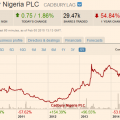Canadian stocks are off to a strong start to begin 2019. Not only has the S&P/TSX Composite Index risen roughly 9{01de1f41f0433b1b992b12aafb3b1fe281a5c9ee7cd5232385403e933e277ce6} – erasing two thirds of last year’s decline – but it is also one of the world’s leading equity markets so far this year (see the chart below). Given the Canadian equity market’s procyclical behavior, it’s not surprising to see it rally stronger than other global bourses in a risk-on period like the one we’re in now. It’s also quite possible that Canadian stocks were sufficiently on sale to warrant a bounce off levels that were consistent with deeply pessimistic sentiment: Canadian stocks were, and still are, trading at one of the cheapest levels to developed market equities in the past three decades.
So the question is, how confident are we that this stellar performance can continue? Our answer: not very.
Firstly, we believe the global economy is in the midst of a late-cycle economic slowdown, and the Canadian economy is not immune to these forces. Our BlackRock Growth GPS projects the annual economic outlook for the Canadian economy will be roughly 1.75{01de1f41f0433b1b992b12aafb3b1fe281a5c9ee7cd5232385403e933e277ce6} in three months’ time, down from 2.5{01de1f41f0433b1b992b12aafb3b1fe281a5c9ee7cd5232385403e933e277ce6} in the second half of 2017 (see the chart below). If there’s any silver lining, it’s that central bank officials, especially the Fed and the Bank of Canada, appear to be in much less of a hurry to normalize monetary policy with growth slowing and inflation currently at bay. But most of this repricing of expected rate hikes has already largely occurred, as reflected in the multiple expansion witnessed since the end of 2018.
More importantly, and this brings us to our second point, global earnings estimates are generally at risk of being revised lower, not higher, during an economic slowdown. Canadian estimates are particularly at risk. In the post-financial-crisis period, we found that earnings estimates decline in Canada by far more than in the U.S. and emerging markets on average over the course of a calendar year (see the chart below). What is noteworthy about this period is that it coincides with the end of the commodity super-cycle and elevated uncertainty about Canadian oil production and distribution. As a result, it should come as no surprise that the bulk of the earnings downgrades in Canada have historically come from the energy and materials sectors (see the chart below).
A month ago, analysts had expected just over 20{01de1f41f0433b1b992b12aafb3b1fe281a5c9ee7cd5232385403e933e277ce6} growth in energy sector earnings in Canada in 2019. That estimate has now fallen to roughly 2{01de1f41f0433b1b992b12aafb3b1fe281a5c9ee7cd5232385403e933e277ce6}. This is healthy, but there may be more to go (see the chart below). Absent a geopolitical shock affecting oil supplies – which anyway is a tax on consuming countries and would likely worsen the global economic outlook if severe and sustained – we don’t expect a material move higher in oil prices above current levels. The expected economic slowdown and questions over OPEC’s ability to keep the oil market balanced should linger throughout 2019. Canadian energy earnings will also face pressure from the Alberta government’s ongoing output curtailment policy, which, although helpful for stabilizing Western Canadian oil prices, will likely weigh on producers’ revenues. Conversely for the materials sector, our analysis finds that downward revisions to earnings estimates more fully reflect the outlook for commodity prices.
For these reasons and many more (elevated trade tensions, structurally low return on equity, high consumer debt burdens, a weakening housing market in key metro regions), we’re not prepared to chase the rally in Canadian stocks nor place too much emphasis on what would otherwise appear as compelling valuation signals. Amid an economic slowdown, we prefer to focus on markets where earnings estimates are more resilient (U.S. and quality factor exposures), sectors and geographies with secular growth opportunities (emerging markets and healthcare) and assets that provide ballast and diversification in the event risk aversion returns (government bonds, short-duration fixed income).
This material is not intended to be relied upon as a forecast, research or investment advice, and is not a recommendation, offer or solicitation to buy or sell any securities or to adopt any investment strategy. The opinions expressed are as of the date indicated and may change as subsequent conditions vary. The information and opinions contained in this post are derived from proprietary and nonproprietary sources deemed by BlackRock to be reliable, are not necessarily all-inclusive and are not guaranteed as to accuracy. As such, no warranty of accuracy or reliability is given and no responsibility arising in any other way for errors and omissions (including responsibility to any person by reason of negligence) is accepted by BlackRock, its officers, employees or agents. This post may contain “forward-looking” information that is not purely historical in nature. Such information may include, among other things, projections and forecasts. There is no guarantee that any of these views will come to pass. Reliance upon information in this post is at the sole discretion of the reader.
© 2019 BlackRock Asset Management Canada Limited. All rights reserved. iSHARES and BLACKROCK are registered trademarks of BlackRock, Inc., or its subsidiaries in the United States and elsewhere. Used with permission.
ICRMG0219C-737396-1/2
SOURCE: BlackRock Blog – Read entire story here.







